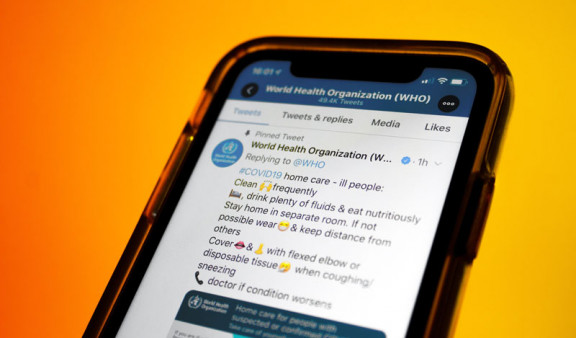
Social networks and the global health crisis: what actions are they taking?
How have the main social networks reacted in the face of the current health crisis??In addition to managing growing disinformation, referred to as an "infodemic" by the WHO, social networks have taken various actions in response to the crisis. Some have acted to support governments and organisations, or assist efforts on the ground, and others have used the opportunity to expand their offering.
Facebook takes many actions and looks to new Apps
After becoming the epicentre of misinformation (more than half of articles consumed in the United States are now related to the coronavirus, according to an internal report), Facebook set out to tackle fake news. It has allocated 100 million dollars to assist media players affected by the drop in advertising business, in order to help them provide reliable information at a time when it is needed more than ever. The social network stated that it has redirected nearly 2 billion users to information released by public health authorities, through its 'Coronavirus (COVID-19) Information Center', which is available on every newsfeed. More than 350 million users have clicked on these educational messages.
The NGO Avaaz has stated, however, that millions of people are still exposed to false information. On the 16th of April, Facebook announced the introduction of notifications sent to all users exposed to fake news on the platform, if they have seen, commented on, liked or shared any such content. This system operates retroactively. Facebook is also sharing aggregated data from its user database, which has been published to help researchers fight the spread of the epidemic. It is also encouraging its American users to participate in a programme of studies that are attempting to assess coronavirus symptoms through a questionnaire, in order to identify the most affected areas. This data should not transit via Facebook's servers and will be sent directly to the university in charge of the study, which will be given a randomly generated identifier for each respondent. In France, Université Paris Sciences et Lettres, a partner of the National Centre for Scientific Research (CNRS), the National Institute for Research in Digital Science and Technology (Inria) and the National Institute of Health and Medical Research (Inserm), will use this data. In many countries, use of Facebook Messenger has increased by more than 50%, while group calls in Italy leapt by 1000%. The Argentinian health ministry launched an experiment, with the support of Botmaker.com, to answer questions from the general public about the coronavirus and continuously provides rapid, reliable and official advice. Organisations such as UNICEF and Pakistan's Ministry of National Health Services also use Messenger to provide citizens with the latest information on COVID-19.

Use of Messenger by Pakistan's Ministry of National Health Services
These initiatives were made possible by the voluntary help of the developer community mobilised following the introduction of a global programme to link up developers with governmental health organisations and UN health agencies. The aim is to help use Messenger as effectively as possible to share accurate information and provide citizens with answers more rapidly.
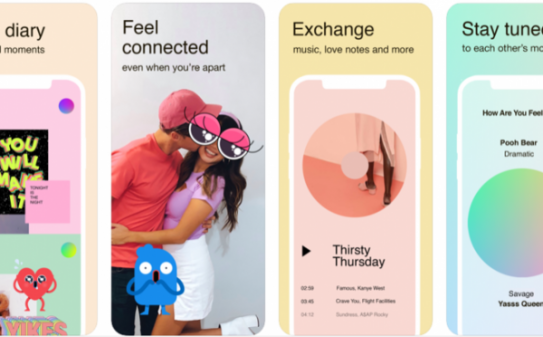
Tuned, Facebook's social network for couples
At the same time, Facebook has launched Hobbi, an app that allows users to share photos of cooking, DIY and other artistic pursuits. In short, a competitor to Pinterest. It is currently available in only a few countries (United States, Ukraine, Columbia, Spain and Belgium), but its deployment during a time of crisis is further evidence of the American tech giant's power. Without much publicity, Facebook has also released a?new social network named 'Tuned', reserved for couples. It is a small way to help couples living apart, separated by the lockdown. With Tuned, couples can share messages, sounds, photos and albums, postcards, love notes and stickers, as well as music with the integration of Spotify.
Instagram raises awareness among users and fights fake news
Instagram, on the other hand, has not announced any major measures, but has developed a few features with the lockdown in mind, such as 'Co-Watching', enabling people to watch content together during a call, and the?global deployment of stickers in stories:
- Stickers dedicated to virus prevention measures are offered (including hand washing reminders and social distancing awareness).
- With the 'Donation' sticker, users can invite their contacts to support a chosen cause.
- The 'Stay Home' sticker automatically adds the user's story to a permanent 'Stay Home' story, which brings together all contacts' stories in a single story and is visible in top position.
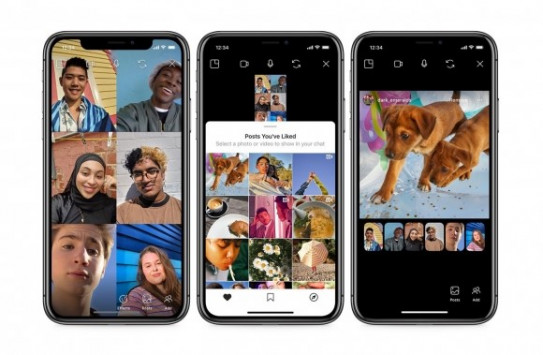
Co-Watching, developed by Instagram
Instagram also announced that it has made a few changes in order to reduce the spread of false information about Covid-19 in its app. Fraudulent advertising and content related to conspiracy theories are deleted, while augmented reality filters related to Covid-19 are banned. Priority is given to content released by recognised health organisations. To achieve this, Instagram uses dedicated inserts in search results for requests related to the coronavirus and a section located at the top of the feed.
Snapchat adapts its filters to the situation
Following Instagram's lead, Snapchat has adapted its features in view of the current situation. By using augmented reality, the social network wants to support the WHO with its new filters:
-
- A filter encouraging users to make donationsto support efforts against Covid-19. They are effects that react when users point the app's camera at a currency (euro, dollar, pound, etc.). Launched in partnership with the United Nations Foundation's COVID-19 Solidarity Response Fund for WHO, these 'lenses' direct users to the donation page.
- "My social distance"uses the smartphone's camera to create a virtual circle that ensures the correct social distance between people is maintained, in accordance with the WHO's recommendations.
- A filter recalls basic rules using animations: the importance of staying at home, washing your hands and not touching your face.
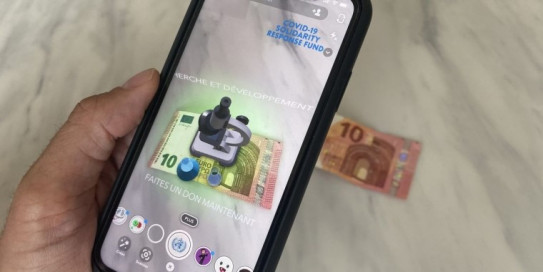
Snapchat's call for donations lens
TikTok – the star app during the lockdown
Like Instagram, TikTok is attempting to delete intentionally misleading content about the coronavirus. Such content includes videos of people pretending to be infected with the virus or promoting false miracle remedies. However, as a challenger, this social network is one of the most inundated. The app had 800 million users in January 2020 (according to DataReportal) and 115 million downloads in March 2020 (according to SensorTower), following the successive lockdowns and citizens' need for entertainment. TikTok must now moderate the millions of new users who create, pass on or consume sometimes deceptive content. The WHO even had to create an account in order to provide correct information and protection advice.
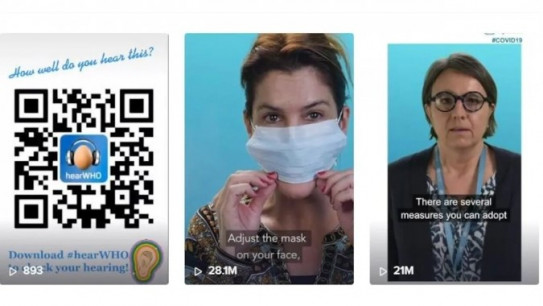
The World Health Organization on TikTok
Twitter: a stream of hashtags and investment in stories
As the go-to place for fresh news, Twitter has been the main forum for debates and information sharing since the beginning of the crisis. 527,000 tweets with the hashtags #coronavirus, #covid19 and #coronavirusFrance were counted in the month of March 2020 alone (according to a study carried out by Hootsuite and Brandwatch). As an example, on the 25th of March, French newspaper Le Monde posted more than 527 tweets with these hashtags in a single day. Like Facebook, Twitter is looking to tackle fake news, in particular by deleting messages that propagate conspiracy theories, or promote ineffective and even dangerous treatments, as well as by deleting accounts that impersonate a government, or a health organisation or manager. Behind the scenes, Twitter is looking ahead with the acquisition of a startup specialised in the?stories format – Chroma Labs. Created in 2018 by former Facebook and Instagram employees, Chroma Labs and its seven employees are joining Twitter's teams, almost certainly working to integrate stories into its platform (as Twitter is one of the last social networks not to offer this feature).

Chroma Labs acquired by Twitter
Youtube uses the opportunity to move into a new market
In a situation that can sometimes be stressful, many users are turning to YouTube to find the latest information in the form of videos. The platform has seen a 75% increase in views of videos in the "News" category in recent weeks, in comparison with 2019. The network is by no means suffering from the crisis and, on the 10th of April, opened a 'Learn at Home' page, which brings together educational content. Sorted into themes and target age groups, the videos come from cartoons, popular YouTubers, such as Nota Bene and Dirty Biology, as well as organisations, such as the National Audiovisual Institute (INA) and Musée d’Orsay.
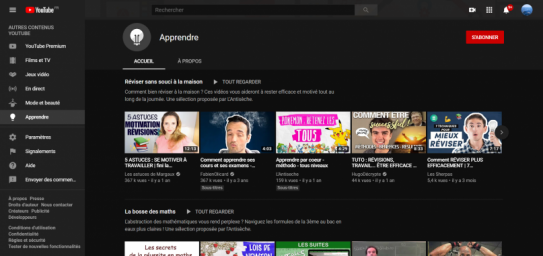
YouTube's "Learn" page
More discreetly, YouTube is preparing to launch an app to compete with TikTok. YouTube is looking to compete with TikTok and capture younger users with a?new app named 'Shorts' set for release by December 2020. In order to expand its content, YouTube will integrate a stream of short videos generated by users, in a similar way to TikTok, directly on its platform, while capitalising on the platform's existing audience (2 billion active users per month). What's more, users will be able to use pieces of licensed music for their videos. In the face of this unprecedented situation and pressure from organisations, such as NGOs, to manage fake news, social networks have demonstrated great responsiveness, launching new features and initiatives in a matter of days. However, this raises the issue of freedom of expression in relation to the control of fake news by private platforms, which, after the crisis, could be extended to other areas, such as politics.